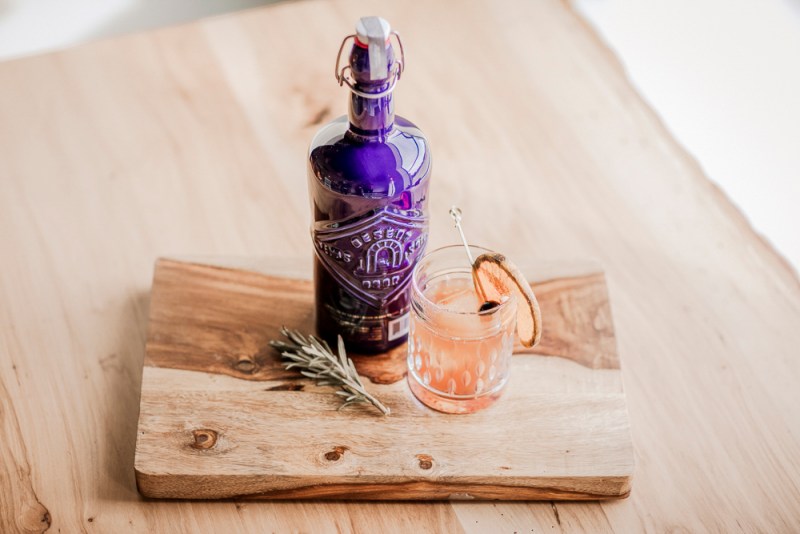
If you’re an enthusiastic cocktail drinker, then you’re probably quite familiar with the ever-popular genre of agave spirits. Perennial favorites like tequila and mezcal appear on beverage lists all over the country (and all over the world), claiming starring roles in smash-hit libations like the margarita and the Paloma.
However, the Mexican spirits market has far more to offer than blancos, reposados, and añejos — in fact, even the agave-spirit subcategory features a wider array of options than tequilas and mezcals. In recent years, beverage directors and mixologists have developed a vibrant interest in “agave-adjacent” spirits, or liquors distilled from alternative parts of the agave plant and from plants in the same genus as agave.

Agave-adjacent spirits with particular cache in today’s cocktail world include raicilla (a mezcal-esque elixir made from roasted and fermented agave hearts), pulque (a beverage made from the aguamiel sap inside the agave plant, most famous for its milky texture), and sotol (a spirit derived from the sotol plant — a close cousin of agave — with a flavor popularly described as “somewhere between tequila and mezcal”). While the latter has been a major presence in the Mexican cocktail scene for centuries, it’s now coming into its own as a key ingredient in artisanal mixed drinks made stateside, and distillers located in New Mexico and Texas find themselves getting in on the action.
One such endeavor can be found at Desert Door Sotol, a craft sotol distillery based in the Texas Hill Country. We had a chance to catch up with Desert Door co-founder Judson Kauffman, who told us more about sotol, about agave-adjacent spirits, and about why these tequila and mezcal alternatives are growing in popularity throughout the cocktail sphere.

The Manual: Where do you think that the new American fascination with these ancient spirits comes from?
Judson Kauffman: The fascination can be tied to the history, romance, and uniqueness of these spirits. In our case, sotol dates back to the pre-European era in America and may very well be the first alcoholic beverage ever consumed in Texas. The natives were drinking it as a type of alcoholic beverage and began to distill it in the 1500s after the Europeans arrived. We cherish that history and find that it also resonates with many of our drinkers. Additionally, [in the case of] sotol, [it] tastes very much of the earth, so drinkers feel a connection to nature because you can really taste it. This strong feeling of connection to both history and nature make it a great spirit for social and celebratory occasions. There has also been a rising interest in ancient food and drink because their processes were very simple and [involved] no chemical additives, processed sugars, etc. being used, so they’re quite simply healthier.
TM: What makes sotol stand out among other similar liquors?
JK: It stands out from other spirits for two main reasons: 1) Sotol plants aren’t farmed, [but are] rather wild-harvested all across Texas (in our case) and Mexico and 2) Sotol has a flavor profile unlike any other spirit. It is smoother than whiskey, less smoky than mezcal, and it doesn’t burn like tequila.

TM: Is there a perceivable difference (in flavor, texture, etc.) between Mexican sotol and Texan sotol?
JK: There is definitely a perceivable difference from sotol to sotol. The differences between our Texas sotol and Mexican sotols can be tied to a few things: 1) We are harvesting 100% Dasylirion texanum while we have seen most other distilleries using Dasylirion leiophyllum or Dasylirion wheeleri. 2) There is a big difference in the lands where every distillery is harvesting from, which results in distinctive terroir, and 3) processes vary widely [from distillery to distillery]. We have heard a few exciting rumors that other folks in Texas, New Mexico, and Arizona are looking at various native plants and how to potentially turn them into beer or liquor as the natives once did.
TM: What’s the “best” way to enjoy sotol?
JK: For us, the perfect way to drink sotol is neat while sitting around a campfire with friends. This is really the way that people in this part of the world have celebrated this plant for over 10,000 years: in a primitive and simple fashion. In cocktails, we find it adds a level of uniqueness to a Paloma that can’t be beat. It also mixes well with traditionally gin-based cocktails because there’s a light and herbaceous quality to sotol.
TM: Finally, Desert Door provided us with a cocktail recipe perfectly-suited to the earthy flavor notes of sotol:

Desert Paloma Recipe
- 1.5 oz Sotol
- 1.5 oz fresh grapefruit juice
- .5 oz fresh lime juice
- .5 oz agave nectar
- Dash of grapefruit bitters or shrub (optional)
- Grapefruit wheel or rosemary sprig (for garnish)
- Salt for rim (optional)
Method: Combine all ingredients into shaker with ice. Shake vigorously for 8-10 seconds. Salt rim of rocks glass, then strain from shaker into glass. Add fresh ice and garnish with a grapefruit wheel or rosemary sprig.



